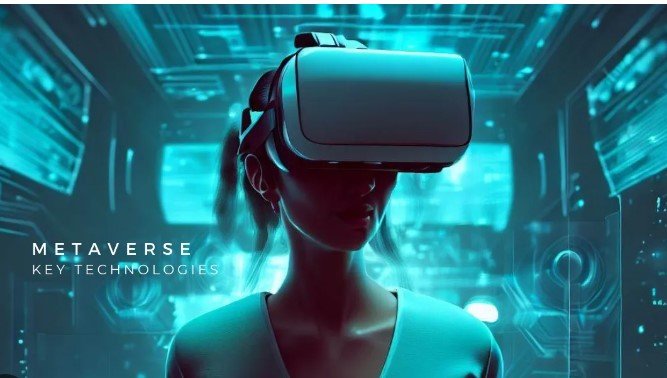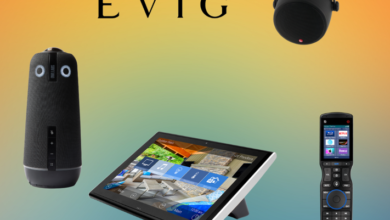
Key Technologies Shaping the Future: A Comprehensive Guide.
Introduction
The technological landscape is evolving at an unprecedented pace, with new innovations constantly reshaping the way we live, work, and interact. From the rapid advancements in artificial intelligence to the transformative potential of quantum computing, the key technologies of today are paving the way for a future that was once the stuff of science fiction. This comprehensive guide delves into the most influential technologies, exploring their current applications and future possibilities. Understanding these key technologies is essential for staying ahead in a world that’s becoming increasingly interconnected and digitally driven.
Artificial Intelligence (AI)
Definition and Overview
Artificial Intelligence (AI) refers to the simulation of human intelligence in machines that are programmed to think and learn like humans. These intelligent systems can perform tasks that typically require human intelligence, such as visual perception, speech recognition, decision-making, and language translation.
Applications in Various Industries
AI is revolutionizing various sectors, including healthcare, finance, automotive, and customer service. In healthcare, AI algorithms are used for diagnostics, personalized medicine, and robotic surgeries. In finance, AI-driven analytics help in fraud detection, risk management, and algorithmic trading. The automotive industry is leveraging AI for the development of autonomous vehicles, while customer service is being transformed with AI-powered chatbots and virtual assistants.
Future Prospects
The future of AI holds immense potential. Advancements in AI are expected to lead to more sophisticated and autonomous systems capable of performing complex tasks with minimal human intervention. The integration of AI with other emerging technologies such as IoT and blockchain will further amplify its impact, driving innovation across industries.
For more information visit: https://forenzapper.net/
Machine Learning
Definition and Overview
Machine Learning (ML) is a subset of AI that focuses on the development of algorithms that enable computers to learn from and make predictions based on data. These algorithms improve their performance over time as they are exposed to more data.
Real-World Applications
ML is widely used in various applications, including recommendation systems, image and speech recognition, and predictive analytics. For instance, streaming services like Netflix and Spotify use ML algorithms to recommend content to users based on their viewing and listening history. In the realm of healthcare, ML is employed to predict disease outbreaks, analyze patient data, and assist in diagnostics.
Future Trends
The future of ML is poised to see more robust and efficient algorithms capable of handling larger datasets and providing more accurate predictions. The integration of ML with cloud computing and edge computing is expected to enhance the processing power and accessibility of ML applications, making them more prevalent in everyday life.
Blockchain Technology
Basics of Blockchain
Blockchain is a decentralized, distributed ledger technology that records transactions across multiple computers in a way that ensures security and transparency. Each transaction is stored in a block, which is linked to the previous block, forming a chain.
Applications Beyond Cryptocurrencies
While blockchain is best known as the underlying technology for cryptocurrencies like Bitcoin, its applications extend far beyond digital currencies. Blockchain is being used in supply chain management to track the provenance of goods, in healthcare to secure patient records, and in finance to facilitate secure and transparent transactions.
Potential Future Developments
The future of blockchain technology looks promising with potential applications in various fields. Smart contracts, which are self-executing contracts with the terms of the agreement directly written into code, are expected to revolutionize legal agreements and business transactions. Furthermore, blockchain’s ability to provide secure and transparent data management can significantly impact industries such as voting systems, real estate, and intellectual property management.
Internet of Things (IoT)
Introduction to IoT
The Internet of Things (IoT) refers to the network of physical objects embedded with sensors, software, and other technologies to connect and exchange data with other devices and systems over the internet.
Applications in Daily Life and Industry
IoT is transforming both daily life and industrial operations. In everyday life, IoT devices include smart home appliances, wearable fitness trackers, and connected vehicles. In industrial settings, IoT is used for predictive maintenance, asset tracking, and automation of manufacturing processes.
Future Impact
The future impact of IoT is vast, with the potential to create more efficient and responsive environments. The integration of IoT with AI and ML will lead to smarter and more autonomous systems capable of making real-time decisions. Additionally, advancements in 5G technology will enhance the connectivity and speed of IoT devices, further expanding their capabilities and applications.
5G Technology
Overview of 5G
5G is the fifth generation of mobile network technology, offering faster speeds, lower latency, and greater connectivity compared to its predecessors. It enables the seamless connection of billions of devices, supporting the growing demand for data and connectivity.
Impact on Connectivity
5G technology is set to revolutionize connectivity by providing ultra-fast internet speeds and reliable connections. This will enhance the performance of mobile networks, support the proliferation of IoT devices, and enable new applications such as remote surgery and autonomous driving.
Future Possibilities
The future possibilities of 5G are immense. With its ability to handle massive amounts of data and connect numerous devices simultaneously, 5G will drive innovations in various fields, including smart cities, augmented reality, and industrial automation. The widespread adoption of 5G is expected to unlock new business models and transform how we interact with technology.
For more information visit: forenzapper.net
Quantum Computing
Basics of Quantum Computing
Quantum computing leverages the principles of quantum mechanics to perform computations far more efficiently than classical computers. It uses quantum bits or qubits, which can represent and process multiple states simultaneously, enabling parallel processing on a massive scale.
Current State
Quantum computing is still in its early stages, with researchers and companies working on developing practical and scalable quantum computers. Current quantum computers are mainly used for experimental and research purposes, with limited commercial applications.
Future Potential
The future potential of quantum computing is enormous. It promises to solve complex problems that are currently intractable for classical computers, such as optimization problems, cryptographic challenges, and drug discovery. As quantum technology advances, it will have profound implications for fields ranging from materials science to artificial intelligence.
Augmented Reality (AR) and Virtual Reality (VR)
Introduction to AR and VR
Augmented Reality (AR) and Virtual Reality (VR) are immersive technologies that alter our perception of the physical world. AR overlays digital information onto the real world, while VR creates a fully immersive digital environment.
Applications
AR and VR have a wide range of applications, from gaming and entertainment to education and training. In gaming, VR provides an immersive experience, while AR enhances gameplay by integrating digital elements into the real world. In education, these technologies offer interactive and engaging learning experiences, while in training, they provide realistic simulations for various industries, including healthcare and aviation.
Future Trends
The future of AR and VR is expected to see more advanced and accessible devices, with improved graphics and interactivity. The integration of AR and VR with AI and IoT will create more personalized and immersive experiences. Additionally, the use of AR and VR in remote work and collaboration is anticipated to grow, offering new ways for teams to interact and work together.
Biotechnology
Overview of Biotechnology
Biotechnology involves the use of biological processes, organisms, or systems to develop products and technologies that improve human life. It encompasses various fields, including genetic engineering, pharmaceuticals, and agriculture.
Applications in Medicine and Agriculture
In medicine, biotechnology is used for developing new drugs, gene therapies, and diagnostic tools. It has led to breakthroughs such as the development of insulin, vaccines, and personalized medicine. In agriculture, biotechnology is used to create genetically modified crops that are resistant to pests and diseases, improving food security and sustainability.
Future Prospects
The future of biotechnology holds the promise of further advancements in medical treatments and agricultural practices. Innovations such as CRISPR gene editing and synthetic biology are expected to revolutionize healthcare and food production. Additionally, biotechnology will play a crucial role in addressing global challenges such as climate change and disease outbreaks.
Robotics
Introduction to Robotics
Robotics involves the design, construction, and operation of robots that can perform tasks autonomously or with minimal human intervention. Robots are used in various industries, including manufacturing, healthcare, and service sectors.
Industrial and Service Applications
In manufacturing, robots are used for tasks such as assembly, welding, and painting, improving efficiency and precision. In healthcare, robots assist in surgeries, rehabilitation, and patient care. In the service sector, robots are used for tasks such as cleaning, delivery, and customer service.
Future Developments
The future of robotics is set to see more advanced and intelligent robots capable of performing complex tasks. The integration of AI and ML will enable robots to learn from their experiences and adapt to new environments. The development of soft robotics and bio-inspired robots will open up new possibilities for applications in healthcare, exploration, and disaster response.
Cybersecurity
Importance of Cybersecurity
Cybersecurity involves protecting computer systems, networks, and data from cyberattacks, unauthorized access, and data breaches. It is crucial for ensuring the confidentiality, integrity, and availability of information in the digital age.
Current Challenges
The current challenges in cybersecurity include the increasing sophistication of cyberattacks, the growing number of connected devices, and the shortage of skilled cybersecurity professionals. Organizations must constantly update their security measures to protect against evolving threats.
Future Trends
The future of cybersecurity will see the adoption of advanced technologies such as AI and ML for threat detection and response. The use of blockchain for secure data management and the development of quantum-resistant encryption algorithms will also enhance cybersecurity. Additionally, the focus on building a cybersecurity-aware culture and investing in cybersecurity education and training will be critical for addressing the growing threats.
Cloud Computing
Basics of Cloud Computing
Cloud computing involves delivering computing services such as servers, storage, databases, networking, and software over the internet (the cloud). It offers on-demand access to resources, allowing organizations to scale and innovate quickly.
Benefits for Businesses
Cloud computing provides numerous benefits for businesses, including cost savings, flexibility, and scalability. It eliminates the need for significant upfront investments in hardware and infrastructure, allowing businesses to pay for only what they use. Cloud services also enable businesses to deploy applications and services faster, improve collaboration, and enhance data security and disaster recovery.
Future Trends
The future of cloud computing will see the continued growth of hybrid and multi-cloud environments, enabling organizations to leverage the best features of different cloud providers. The integration of AI and ML with cloud services will offer more intelligent and automated solutions. Edge computing, which involves processing data closer to the source, will complement cloud computing by reducing latency and improving performance.
Edge Computing
Introduction to Edge Computing
Edge computing involves processing data at or near the source of data generation rather than relying solely on centralized cloud servers. It aims to reduce latency, improve response times, and enhance the performance of applications.
Differences from Cloud Computing
While cloud computing centralizes data processing and storage, edge computing distributes these functions closer to the data source. This reduces the need for data to travel long distances, resulting in faster processing and lower latency.
Future Impact
The future impact of edge computing will be significant, particularly in applications requiring real-time processing and low latency. Industries such as healthcare, manufacturing, and transportation will benefit from edge computing by enabling faster decision-making and improving operational efficiency. The combination of edge computing with 5G technology and IoT will further enhance its capabilities and applications.
Autonomous Vehicles
Overview of Autonomous Vehicles
Autonomous vehicles, or self-driving cars, use a combination of sensors, cameras, and AI algorithms to navigate and operate without human intervention. They aim to improve road safety, reduce traffic congestion, and provide greater mobility.
Current State and Challenges
The development of autonomous vehicles is advancing rapidly, with several companies conducting extensive testing and pilot programs. However, challenges such as regulatory approval, safety concerns, and technological limitations remain. Ensuring the reliability and security of autonomous systems is crucial for their widespread adoption.
Future Developments
The future of autonomous vehicles will see more advanced and reliable self-driving systems. The integration of AI, ML, and IoT will enable autonomous vehicles to communicate with each other and with infrastructure, improving safety and efficiency. Additionally, the development of smart cities and 5G technology will support the growth of autonomous transportation networks.
3D Printing
Basics of 3D Printing
3D printing, or additive manufacturing, involves creating three-dimensional objects by adding material layer by layer based on a digital model. It allows for the rapid prototyping and production of complex and customized parts.
Applications in Various Industries
3D printing is used in various industries, including aerospace, automotive, healthcare, and consumer goods. In aerospace, it is used to produce lightweight and complex components. In healthcare, 3D printing is used for creating prosthetics, implants, and medical models. The automotive industry uses 3D printing for prototyping and producing customized parts, while consumer goods manufacturers use it for creating personalized products.
Future Potential
The future potential of 3D printing is vast, with the technology expected to become more accessible and versatile. Advances in materials and printing techniques will enable the production of more complex and durable objects. The adoption of 3D printing in mass production and the development of 4D printing, where printed objects can change shape over time, will further expand its applications.
Nanotechnology
Introduction to Nanotechnology
Nanotechnology involves manipulating matter at the nanoscale (one billionth of a meter) to create materials and devices with unique properties. It has applications in various fields, including medicine, electronics, and materials science.
Applications in Medicine and Industry
In medicine, nanotechnology is used for targeted drug delivery, diagnostic imaging, and regenerative medicine. It enables the creation of nanoparticles that can deliver drugs directly to cancer cells, improving treatment efficacy and reducing side effects. In industry, nanotechnology is used to create stronger and lighter materials, improve energy efficiency, and enhance electronic devices.
Future Prospects
The future prospects of nanotechnology are promising, with potential breakthroughs in healthcare, energy, and materials science. Innovations such as nanoscale sensors, nanorobots, and nanomaterials will revolutionize various industries. The continued research and development in nanotechnology will lead to more advanced and practical applications, improving our quality of life.
Renewable Energy Technologies
Overview of Renewable Energy
Renewable energy comes from natural sources that are constantly replenished, such as sunlight, wind, water, and geothermal heat. It offers a sustainable and environmentally friendly alternative to fossil fuels.
Key Technologies
Key renewable energy technologies include solar power, wind power, hydropower, and bioenergy. Solar power involves converting sunlight into electricity using photovoltaic cells. Wind power generates electricity using wind turbines, while hydropower harnesses the energy of flowing water. Bioenergy is produced from organic materials such as plants and waste.
Future Developments
The future of renewable energy technologies is bright, with continued advancements expected to improve efficiency, reduce costs, and expand applications. Innovations such as floating solar farms, advanced wind turbines, and next-generation biofuels will enhance the viability of renewable energy sources. The integration of renewable energy with smart grids and energy storage solutions will also support the transition to a sustainable energy future.
Biometrics
Introduction to Biometrics
Biometrics involves the use of unique physical or behavioral characteristics to identify and authenticate individuals. Common biometric identifiers include fingerprints, facial recognition, iris scans, and voice recognition.
Applications in Security
Biometrics is widely used in security applications for access control, identity verification, and surveillance. It offers a more secure and convenient alternative to traditional methods such as passwords and PINs. Biometrics is used in various settings, including airports, government buildings, and smartphones.
Future Trends
The future of biometrics will see more advanced and accurate identification technologies. The integration of AI and ML will enhance biometric systems, making them more reliable and secure. The use of multimodal biometrics, which combines multiple biometric identifiers, will improve accuracy and reduce the risk of fraud. Additionally, the adoption of biometrics in everyday applications such as banking and e-commerce will continue to grow.
Wearable Technology
Overview of Wearable Tech
Wearable technology refers to electronic devices that can be worn on the body, such as smartwatches, fitness trackers, and smart glasses. These devices are equipped with sensors and connectivity features, allowing them to collect and transmit data.
Applications in Health and Fitness
Wearable technology is widely used in health and fitness applications. Fitness trackers monitor physical activity, heart rate, and sleep patterns, providing users with insights into their health and wellness. Smartwatches offer additional features such as notifications, GPS tracking, and mobile payments. In healthcare, wearable devices are used for remote patient monitoring, chronic disease management, and personalized health recommendations.
Future Potential
The future potential of wearable technology is significant, with advancements expected in sensor technology, battery life, and device miniaturization. Wearable devices will become more integrated into our daily lives, offering more personalized and actionable health insights. The development of smart textiles and implantable wearables will further expand the applications of wearable technology in healthcare and beyond.
Smart Cities
Concept of Smart Cities
Smart cities leverage digital technology and data to improve the quality of life for residents, enhance urban services, and promote sustainability. They use a combination of IoT, AI, and data analytics to manage infrastructure, resources, and services efficiently.
Key Technologies Involved
Key technologies involved in smart cities include IoT sensors, smart grids, intelligent transportation systems, and data analytics platforms. IoT sensors collect data on various aspects of urban life, such as air quality, traffic flow, and energy usage. Smart grids optimize the distribution and consumption of electricity, while intelligent transportation systems improve traffic management and reduce congestion.
Future Developments
The future developments in smart cities will see greater integration of technology and data-driven decision-making. The use of AI and ML will enable more predictive and proactive management of urban services. The development of 5G networks will enhance connectivity and support the deployment of more IoT devices. Smart cities will also focus on sustainability, using technology to reduce carbon emissions, improve energy efficiency, and promote green infrastructure.
Conclusion
In conclusion, the key technologies discussed in this guide are shaping the future in profound ways. From the advancements in AI and quantum computing to the transformative potential of IoT and renewable energy, these technologies are driving innovation and changing the way we live and work. Staying informed about these key technologies is essential for understanding their impact and preparing for the future. As these technologies continue to evolve, they will bring new opportunities and challenges, ultimately improving our quality of life and driving progress across various fields.
FAQs
What is the most impactful technology today?
Artificial Intelligence (AI) is considered one of the most impactful technologies today due to its wide range of applications across industries and its potential to revolutionize various aspects of life and work.
How does blockchain technology work?
Blockchain technology works by creating a decentralized and distributed ledger that records transactions across multiple computers. Each transaction is stored in a block, which is linked to the previous block, forming a chain that ensures security and transparency.
What are the benefits of 5G technology?
The benefits of 5G technology include faster internet speeds, lower latency, greater connectivity, and the ability to support a large number of connected devices. It enables new applications such as remote surgery, autonomous driving, and smart cities.
How is IoT changing industries?
IoT is changing industries by enabling the collection and analysis of data from connected devices, improving efficiency, productivity, and decision-making. It is used in various applications, including predictive maintenance, asset tracking, and automation.
What is the future of quantum computing?
The future of quantum computing holds the promise of solving complex problems that are currently intractable for classical computers. It has potential applications in fields such as optimization, cryptography, and drug discovery.
How does wearable technology benefit health and fitness?
Wearable technology benefits health and fitness by monitoring physical activity, heart rate, and sleep patterns, providing users with insights into their health and wellness. It also offers features such as GPS tracking and personalized health recommendations.




